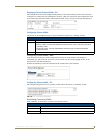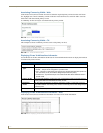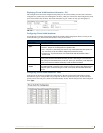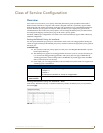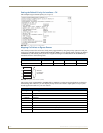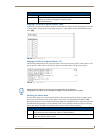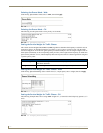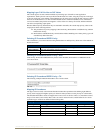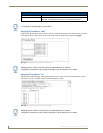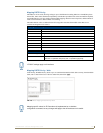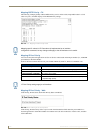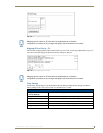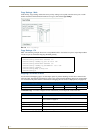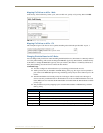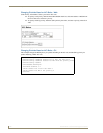
Class of Service Configuration
141
NXA-ENET24 - Software Management Guide
Mapping Layer 3/4 Priorities to CoS Values
This switch supports several common methods of prioritizing layer 3/4 traffic to meet application
requirements. Traffic priorities can be specified in the IP header of a frame, using the priority bits in the Type
of Service (ToS) octet or the number of the TCP/UDP port. If priority bits are used, the ToS octet may contain
three bits for IP Precedence or six bits for Differentiated Services Code Point (DSCP) service. When these
services are enabled, the priorities are mapped to a Class of Service value by the switch, and the traffic then
sent to the corresponding output queue.
Because different priority information may be contained in the traffic, this switch maps priority values to the
output queues in the following manner:
The precedence for priority mapping is IP Port Priority, IP Precedence or DSCP Priority, and then
Default Port Priority.
IP Precedence and DSCP Priority cannot both be enabled. Enabling one of these priority types will
automatically disable the other.
Selecting IP Precedence/DSCP Priority
The switch allows you to choose between using IP Precedence or DSCP priority. Select one of the methods or
disable this feature.
Selecting IP Precedence/DSCP Priority - Web
Click Priority, IP Precedence/DSCP Priority Status. Select Disabled, IP Precedence or IP DSCP from the
scroll-down menu.
Selecting IP Precedence/DSCP Priority - CLI
The following example enables IP Precedence service on the switch.
Mapping IP Precedence
The Type of Service (ToS) octet in the IPv4 header includes three precedence bits defining eight different
priority levels ranging from highest priority for network control packets to lowest priority for routine traffic.
The default IP Precedence values are mapped one-to-one to Class of Service values (i.e., Precedence value 0
maps to CoS value 0, and so forth). Bits 6 and 7 are used for network control, and the other bits for various
application types. ToS bits are defined in the following table.
Command Attributes
• Disabled: Disables both priority services. (This is the default setting.)
•
IP Precedence: Maps layer 3/4 priorities using IP Precedence.
• IP DSCP: Maps layer 3/4 priorities using Differentiated Services Code Point Mapping.
FIG. 162
Web - IP Precedence/DSCP Priority Status
FIG. 163 CLI - IP Precedence/DSCP Priority Status
Mapping IP Precedence
Priority Level Traffic Type Priority Level Traffic Type
7 Network Control 3 Flash
6 Internetwork Control 2 Immediate
5Critical 1Priority
4 Flash Override 0 Routine



